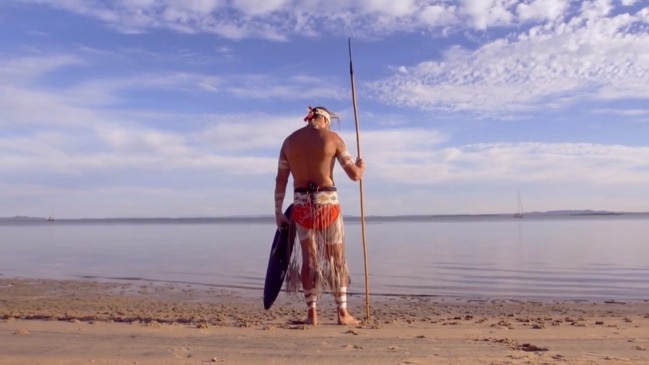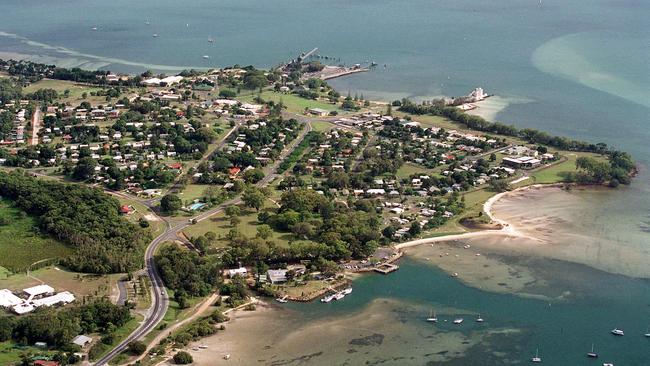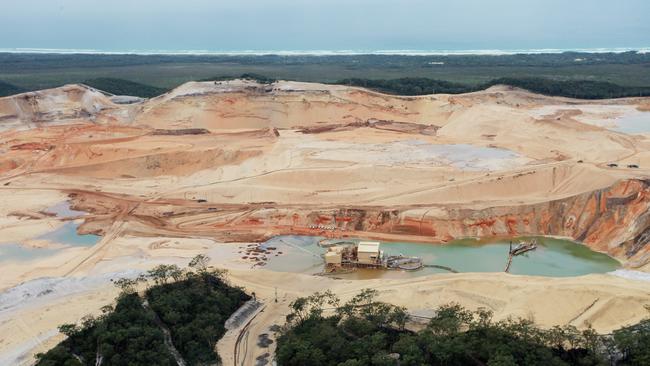Radioactive sand scare on Straddie
Dangerous levels of radioactive sand last week forced the partial closure of a daycare centre in southeast Queensland.

QLD News
Don't miss out on the headlines from QLD News. Followed categories will be added to My News.
Dangerous levels of radioactive sand last week forced the partial closure of a daycare centre on Stradbroke Island.
The Courier-Mail can reveal the Stradbroke Early Learning Centre at Dunwich on North Stradbroke Island was forced to temporarily close parts of their campus after concerns were raised by the Department of Natural Resources, Mines and Energy (DNRME).
The childcare facility was the only one of the 74 Dunwich sites tested where the department found a higher than usual level of radioactivity in the sand, which contains small amounts of radioactive elements uranium and thorium.

Queensland Health confirmed the sand at the childcare had an elevated level of radioactivity but said “the risk of adverse health impacts was minuscule”.
“Parents, staff and nearby residents should not be concerned,” they said in a statement.
“A person would have to stand at the highest radiation point in the area for eight hours a day, for a year, before they would be exposed to the same amount of radiation as that produced by a CT scan.”
The DNRME became aware of the radioactive sand underneath a building at the childcare facility after conducting investigations in the area to assess potential impacts of historic mining activities on state owned land.
A statement from the DNRME said after excavating the sand from the childcare facility, “the material (was) safely transported in secure and covered containers and stored at an offsite facility in accordance with regulatory requirements”.
“The centre, staff and parents and guardians were engaged in advance and throughout the remediation process.”
The Junner St childcare, which can hold up to 48 kids full time, ranging in ages from six weeks to five years, was not significantly impacted during the works, with the bulk of the excavation and refill taking place over the weekend.
The Stradbroke Island Learning Centre said they were not concerned about the safety of the children or staff.

The state government this year invested $1.16 million to prepare a draft of a master plan for Dunwich in hopes to revitalise the area and turn it into a tourist destination.
A Redland City Council spokesperson said understanding the consequences of potential land contamination was crucial to the community before the plans should be able to go ahead.
“Understanding any potential contamination across the island is one of the key reasons Council has always believed more work needs to be done before land is rezoned or uses are decided,” the spokesperson said.
“It is important to know what land may be used for so the community can then understand any possible land contamination consequences.
“ … There may be more site remediation required, so it is important to understand these potential impacts.”
As the second largest sand island in the world, North Stradbroke Island has been mined heavily for the resource since 1949.
However, the last of the island’s three mines was closed in December last year following many years of debate.
In 2012 the results of a two year health investigation undertaken by the State Government found no “evidence to suggest that activities associated with the mining, processing and transportation of mineral sand on North Stradbroke Island adversely affected occupational or public health, from a radiological perspective”.

